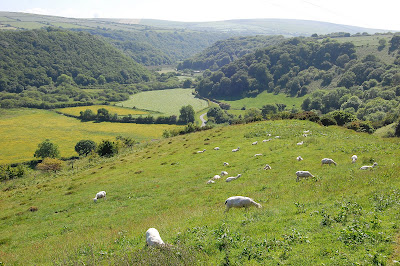We decided to have a short break in what is known as East Anglia in this part of the world. It is very rural and peaceful and has the least pollution in the whole of the UK. First of all we spent two nights in Aldeburgh, an unspoilt resort that was once a fairly thriving fishing port. In fact if you are up early you can go down to the beach and buy some of the last night's catch from the fishermen's huts. The picture above is the view from our bedroom window overlooking the beach.
This is the view of Ocean House where we stayed. The boat seems a permanent fixture on the shingly beach. It's always there.
I took this shot of a boat through a mass of very attractive red-valerian, a wild flower that thrives on the shingle.
I took this shot from the bridge at Snape, a village now famous for the Aldeburgh Festival. It was once a large grain distribution centre, but is now a tourist attraction that has retained its Victorian atmosphere.
Just a mile or two north of Aldeburgh is the attractive seaside-village of Thorpeness. It is unique because it is the creation of one man, a successful barrister name Glencairn Olgilvie who decided in 1910, to build a mock-Tudor village for the pleasure and recreation of his friends and workers. Its main attraction is the boating lake known as the Mere.

This is the view across the lake. The historic windmill can be seen and also the rather eccentric House in the Clouds, which can be hired as a holiday home.
The next day we drove over to a camp-site near to the old town of Theford. Part of the journey involved using the A1120 from Yoxford to Stowmarked. The journey took us through what I consider to be the most gloriously beautiful countryside in the whole of Europe. Everywhere nature seemed to be robed in the most splendid robe of vivid greens, the hedgerows and the masses of may-blossom adding to the scene. All along we passed through many very quaint and peaceful villages and hamlets. It was somewhat of a shock to get on the the motorway near Stowmarket.
Just near the campsite is the celebrated Pingo Trail that runs through the nearby forest. The Pingos we are told are tiny lakes left by the glaciers of the ice age, containing the most interesting flora and fauna. We cycled through the forest and had a substantial lunch in the sixteenth-century known as the Chequers (see above) in the attractive village of Thompson.
Top above you can see a typical scene from rural Norfolk and just below is an example of a Pingo.


















